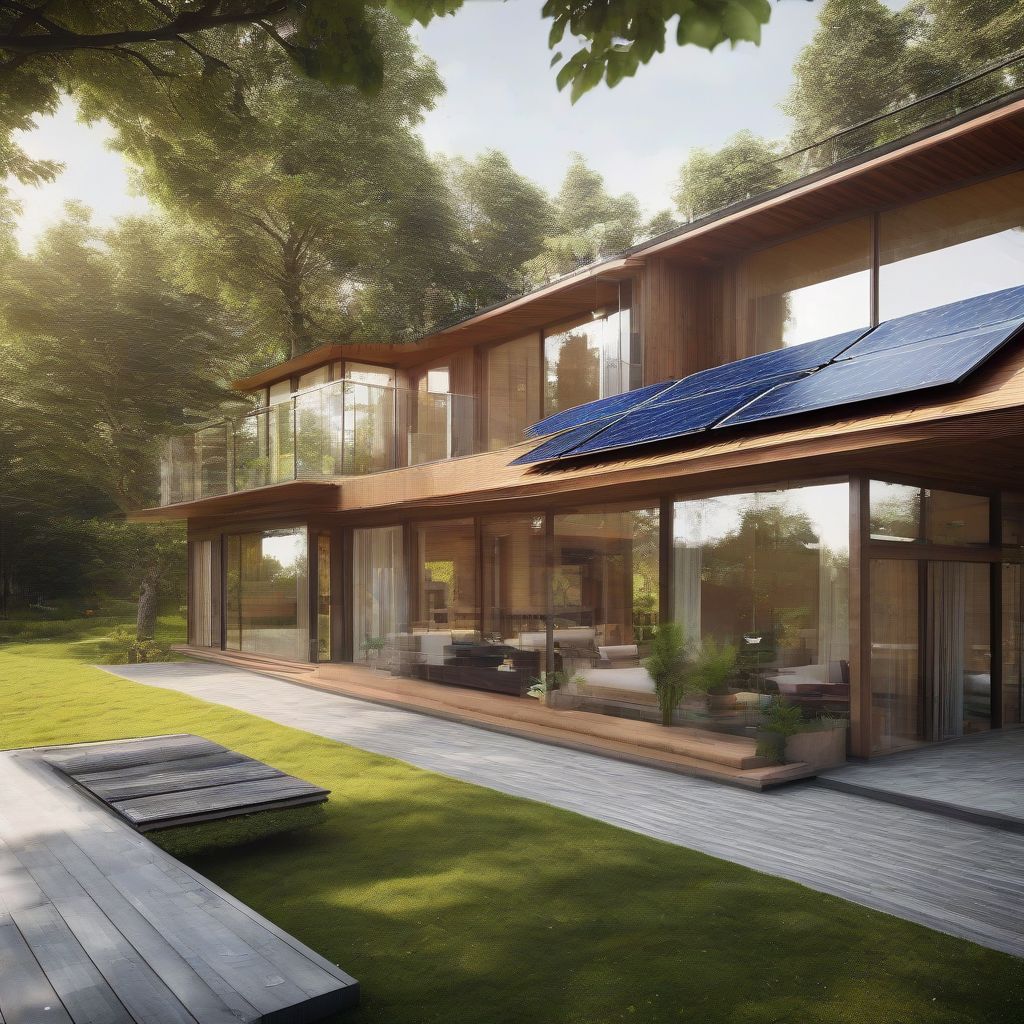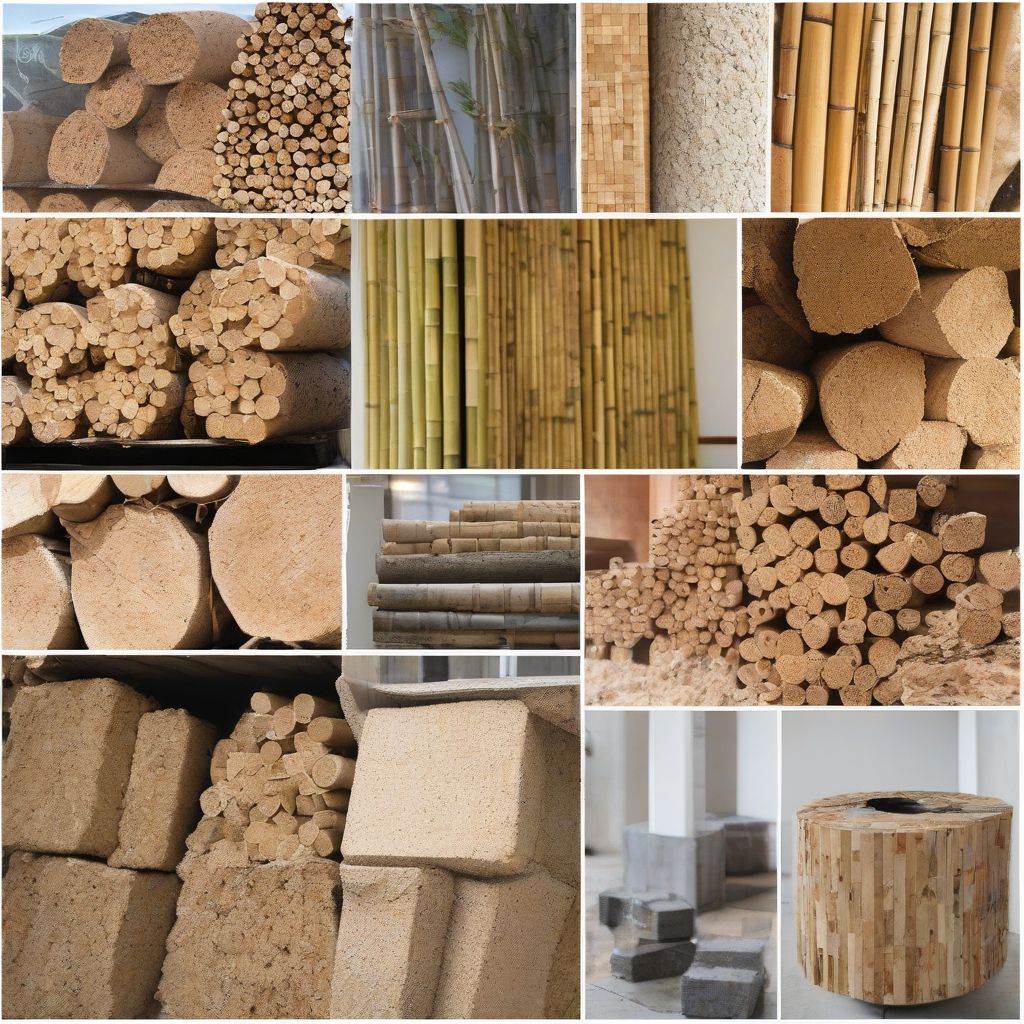Imagine a home that’s not only beautiful and comfortable but also kind to the planet. Sounds like a dream, right? Well, with sustainable building materials, it’s becoming more of a reality every day.
As a nutritionist, I’m passionate about making healthy choices, and that extends to the spaces we live in. Choosing sustainable materials for your home is like opting for nutrient-rich foods over processed ones – both benefit your well-being in the long run. So, let’s dive into why incorporating these eco-friendly options is a win-win for you and the environment.
Environmental Advantages: Reducing Your Footprint One Brick at a Time
Sustainable materials are all about minimizing the negative impact on our planet throughout their entire lifecycle. Here’s how:
1. Conserving Precious Resources
- Reduced Energy Consumption: Manufacturing traditional materials like concrete and steel requires significant energy. Sustainable alternatives often have lower embodied energy, meaning less energy is used in their production, transportation, and disposal.
- Water Conservation: Did you know that the construction industry is a major water consumer? Sustainable materials often require less water to produce. For example, bamboo grows rapidly and doesn’t need irrigation, making it a water-wise choice.
- Preserving Natural Resources: Sustainable materials prioritize renewable resources like bamboo, cork, and timber from sustainably managed forests. By choosing these options, you’re helping protect our forests and the biodiversity they support.
2. Minimizing Waste and Pollution
- Reduced Construction Waste: Sustainable building often focuses on minimizing waste through efficient design and prefabrication, leading to less material ending up in landfills.
- Lower Emissions: The production of traditional building materials often releases greenhouse gases. Sustainable options typically have a lower carbon footprint, contributing less to climate change.
- Healthier Indoor Air Quality: Many sustainable materials, such as natural paints and finishes, release fewer volatile organic compounds (VOCs), improving indoor air quality and reducing the risk of respiratory problems.
 Eco-Friendly House
Eco-Friendly House
Economic Benefits: Building Smart, Saving Smart
Choosing sustainable materials isn’t just good for the environment – it can be good for your wallet too:
1. Long-Term Savings
- Energy Efficiency: Sustainable materials often boast excellent insulation properties, keeping your home warmer in the winter and cooler in the summer. This translates to lower energy bills and long-term savings.
- Durability and Low Maintenance: Many sustainable materials, like reclaimed wood or recycled metal, are incredibly durable and require less maintenance over time, reducing repair and replacement costs.
- Increased Property Value: As awareness of sustainability grows, homes built with eco-friendly materials are becoming increasingly desirable, potentially increasing your property’s resale value.
2. Financial Incentives
- Government Rebates and Tax Credits: In many regions, governments offer financial incentives to encourage sustainable building practices. This could mean tax breaks, rebates, or grants to help offset the cost of using eco-friendly materials.
- Lower Insurance Premiums: Some insurance companies offer lower premiums for homes built with sustainable materials, recognizing their resilience and reduced risk of damage.
Health and Well-being: Creating a Healthier Home
A healthy home is a happy home, and sustainable materials play a crucial role in creating a nurturing living environment:
1. Improved Indoor Air Quality
- Natural and Non-Toxic Materials: Sustainable building often prioritizes natural, non-toxic materials that don’t release harmful chemicals into the air you breathe, reducing the risk of allergies and respiratory issues.
- Proper Ventilation: Sustainable design emphasizes proper ventilation and airflow, reducing moisture buildup and preventing mold growth, which can have adverse health effects.
2. Enhanced Comfort and Well-being
- Natural Light and Views: Sustainable homes often incorporate large windows and strategic design to maximize natural light, boosting mood and reducing reliance on artificial lighting.
- Connection to Nature: The use of natural materials like wood and stone creates a sense of warmth and connection to the outdoors, promoting a sense of tranquility and well-being.
Popular Sustainable Building Materials
Curious about what these eco-friendly options look like in action? Here are some popular sustainable building materials:
- Bamboo: This fast-growing grass is incredibly strong and versatile, making it ideal for flooring, beams, and even walls.
- Reclaimed Wood: Repurposing wood from old barns, factories, or other structures reduces demand for new timber and adds character to your home.
- Recycled Metal: Using recycled steel and aluminum reduces the environmental impact of mining and manufacturing new metals.
- Cork: This renewable material harvested from the bark of cork oak trees offers excellent insulation and soundproofing properties.
- Hempcrete: Made from hemp fibers and lime, this natural building material is lightweight, fire-resistant, and regulates humidity.
 Sustainable Building Materials
Sustainable Building Materials
[amazon bestseller=”sustainable building materials”]
Conclusion: Building a Better Future, One Home at a Time
Choosing sustainable materials for your home is an investment in a healthier planet and a brighter future for generations to come. By embracing eco-friendly building practices, you’re not just constructing a house – you’re building a legacy of responsibility and sustainability.
If you’re considering building or renovating, I encourage you to explore the world of sustainable building materials. It’s a journey that benefits both your well-being and the health of our planet.
What steps are you taking to incorporate sustainability into your home? Share your thoughts and experiences in the comments below!
